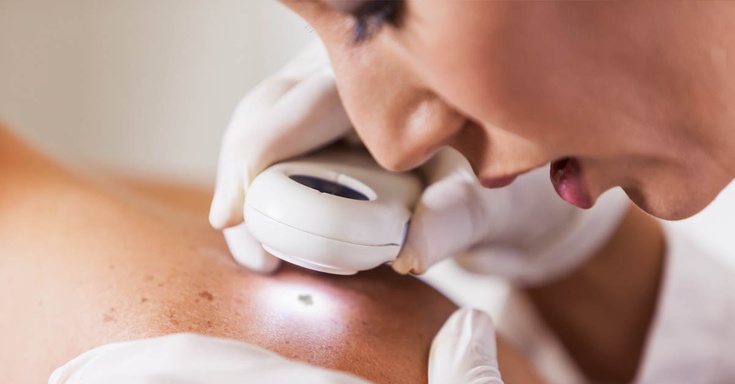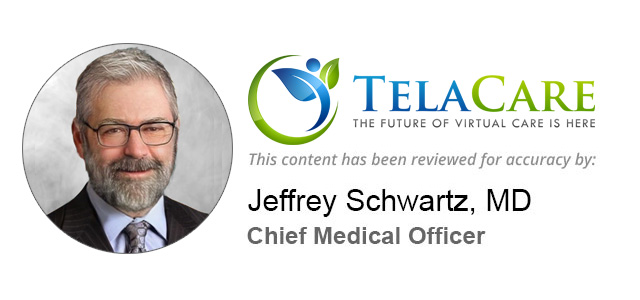
Diagnosing & Treating Moles & Warts Online
While moles and warts are both types of common skin growths, they do have differences. Most people have at least a few moles while warts are less common. Moles can develop into skin cancer while warts cannot. So what is the difference and how do you know if one is harmful?
Moles
Melanocytic nevus, most commonly known as moles, are usually noncancerous growths of pigment-producing skin cells. Moles can appear anywhere on the skin – alone or in groups. Most moles appear in the first 25 years of one’s life and will continue to grow and develop over the years. It is normal and typically harmless for these skin lesions to grow, but it’s important to know the signs of a mole that has become cancerous.
Most moles are not dangerous. However, moles that continue to grow or new moles should be examined. When examining your moles for changes, you should follow the ABCDE’s:
- Asymmetry: when one half of the mole does not match the other half
- Border: when the edges of the mole are irregular
- Color: when the mole has multiple colors or has shades of tan, brown, black, blue, red or white
- Diameter: when the mole’s diameter is larger than the eraser of a pencil
- Evolving: when the mole appears different from others and continues to grow
If you have developed a new mole, but it does not fit any of the ABCDE signs, you should still get that mole examined. You should always be suspicious of new moles, especially if you are over the age of 25. Also, it’s good to know that the most common location for skin cancers in men is the back and for women it’s the lower leg.
Warts
Warts are usually small, flesh colored bumps on the skin caused by the human papillomavirus – otherwise known as HPV – and are always benign (not cancerous). Warts can spread easily by contact with the wart or something that touched the wart. There are three types of warts:
- Common warts: these warts will typically develop on the hands, especially around the finger nail. This type of wart is usually gray to flesh colored, rough and raised with hornlike projections.
- Plantar warts: this type of wart will appear on the bottom of the foot. They usually occur in high-pressure areas like the heel and ball of the foot. These warts will typically grow into the skin rather than outward like common warts.
- Flat warts: these warts are commonly seen on the face and back of the hands. They will usually appear as small individual bumps about ¼ inch across. These warts are known to spread rapidly on the face from activities such as shaving.
You and your online doctor can help determine the severity of your skin growth and what type of treatment is needed, or if a referral to a dermatologist or specialist is required.
During a video consult on TelaCare your doctor will ask you a series of targeted questions to determine the severity of your mole/wart. Then your provider will proceed to determine the best treatment plan for you. Your provider may recommend in-person examination by a specialist if this is needed. Your treatment plan is based on the duration and severity of your symptoms and your medical history.
Our platform has an image upload feature that is extremely helpful for both providers and patients. With this feature, our physicians can get a precise, detailed look at your mole/wart before the visit even begins. This feature is also very useful to see how your skin growths have progressed. If your mole/wart has been present for a few days and you have a picture from the first day, it is helpful for our providers to see the comparison. If your outbreak is on your face, this feature is specifically useful for those that wear makeup – you can take a picture when you have a clean face, save it and upload before your visit! For best results we recommend pictures be taken in bright, natural light, close to the outbreak and from a few different angles. If you can give a size perspective, like placing a dime on the skin, this can be extremely helpful, as well.
Once a diagnosis has been made, your doctor will go over the risks and benefits of the various treatment plans. Treatment for moles and warts are different depending on the severity.
Options for treatment of moles and/or warts may include:
- Removal of the skin lesion
- Freezing the skin growth
- Surgery



